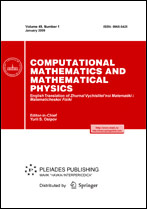|
This article is cited in 4 scientific papers (total in 4 papers)
Computer science
Modeling epidemics: neural network based on data and SIR-model
O. I. Krivorot'ko, N. Yu. Zyatkov, S. I. Kabanikhin
Sobolev Institute of Mathematics, Siberian Branch of the Russian Academy of Sciences, 630090, Novosibirsk, Russia
Abstract:
Earlier, a method for constructing an initial approximation for solving the inverse problem of acoustics by a gradient method based on a convolutional neural network trained to predict the distribution of velocities in a medium from wave response was proposed [9]. It was shown that the neural network trained on responses from simple layered media can be successfully used for solving the inverse problem for a significantly more complex model. In this paper, we present algorithms for processing data about epidemics and an example of applying a neural network for modeling the propagation of COVID-19 in Novosibirsk region (Russia) based only on data. A neural network NN-COVID-19 that uses data about the epidemics is constructed. It is shown that this neural network predicts the propagation of COVID-19 for five days by an order of magnitude better than SEIR-HCD. When a new variant (Omicron) appeared, this neural network was able to predict (after retraining) the propagation of the epidemics more accurately. Note that the proposed neural network uses not only epidemiological data but also social ones (such as holidays, restrictive measures, etc.). The proposed approach makes it possible to refine mathematical models. A comparison of the curves constructed by SEIR-HCD model and by the neural network shows that the plots of solutions of the direct problem almost coincide with the plots constructed by the neural network. This helps refine coefficients of the differential model.
Key words:
epidemiology, time series, machine learning, deep learning, data processing, recurrent neural networks, fully connected neural networks, COVID-19, prediction, forcasting.
Received: 22.05.2023
Revised: 22.05.2023
Accepted: 26.06.2023
Citation:
O. I. Krivorot'ko, N. Yu. Zyatkov, S. I. Kabanikhin, “Modeling epidemics: neural network based on data and SIR-model”, Zh. Vychisl. Mat. Mat. Fiz., 63:10 (2023), 1733–1746; Comput. Math. Math. Phys., 63:10 (2023), 1929–1941
Linking options:
https://www.mathnet.ru/eng/zvmmf11639 https://www.mathnet.ru/eng/zvmmf/v63/i10/p1733
|


| Statistics & downloads: |
| Abstract page: | 82 |
|





 Contact us:
Contact us: Terms of Use
Terms of Use
 Registration to the website
Registration to the website Logotypes
Logotypes








 Citation in format
Citation in format 
